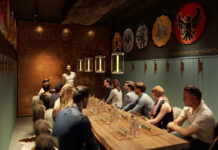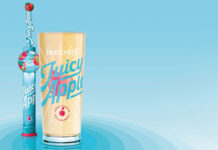
Publicans must win over a new generation as new tastes and beer trends emerge
OPERATORS must try and win the hearts and minds of customers if they are to create a point of difference and attract new beer drinkers, according to brewers.
They say every generation has its own favourites and pubs and bars must cater for different tastes as trends evolve.
“Customers now are more likely to try new categories and products,” said a spokesman for Belhaven.
“Each generation has evolving habits and demands and it is important the industry caters for this.”
Hugo Mills of Molson Coors said the need to appeal to different tastes means an outlet’s beer range is more important than ever.
“Operators need to have the right range, but they should also think creatively, take more risks and really tap into the hearts and minds of their drinkers,” said Mills.
“Beer might be one of the oldest categories but it’s also fast becoming one of the most innovative with a new golden age emerging.”
Striking a balance between new products and established favourites is a must, according to Brian Calder, chief executive of Tennent Caledonian Breweries.
“There’s a phenomenal amount of choice which allows for almost unlimited experimentation in terms of taste profile but operators need to strike a balance between new beers and their core offering in order to appeal to as broad a range of consumers as possible,” said Calder.
Craft beer continues to be one of the booming sections of the beer category, and drinks firms reckon demand will continue to grow in 2015.
“Beer is currently experiencing a ‘craft revolution’, driven by consumers demanding more authentic and rewarding experiences from the products they are purchasing,” said Stephen O’Kelly, marketing director for Guinness Western Europe.
Regularly changing the selection of beers can help keep customers interested in the range, according to Kathryn Purchase, director of customer marketing at Carlsberg UK.
She said: “Constantly changing your guest beers is a great way to keep customers interested and also has the added benefit of keeping the quality of the beer at a high level.”
Provenance can also be a useful tool for stimulating interest in a brand.
“Operators should always be looking to keep their beer offering fresh and exciting and I believe stocking a quality range of beers with interesting backstories and a point of difference is vital,” said Peter Karsten, managing director of distributor World Beers.
External factors can also influence which style of beers prove popular with customers, and the introduction of the lower Scottish drink-driving limit has led to several firms marketing low or no-alcohol beers.
Tennent Caledonian launched low-alcohol beer Lemon T early last year which was followed, in December, by alcohol-free beer Hee-Haw.
Calder said the new product “has really struck a chord with Scottish consumers and we’ve had great feedback so far”.
Drinks importer Morgenrot has also moved into the low-alcohol arena, having introduced low-ABV Alhambra Sin and Krombacher Low Alcohol Pils north of the border.
“Changes to the drink-driving limit in Scotland have undoubtedly led to an increase in demand for low-ABV or no-ABV beers,” said Graham Archibald, Morgenrot national sales director.
He added that low or no-alcohol beers are no longer viewed as “low-quality and tasteless”.
Smaller glass sizes and measures can also cater to customers looking to limit their alcohol consumption.
Petra Wetzel of West Brewery said: “At West we have always offered both tasting-sized servings of our beer as well as all of our draught products being available in third pints.
“This allows for responsible alcohol consumption as well as giving the customer the freedom to sample our range.”
And Gerald Michaluk of Arran Brewery argued that this type of variation should be much more widespread across the trade, with operators allowed to serve beer in a much wider selection of measures.
He said: “We should scrap this idea that we should sell in pints or portions thereof.
“In France and Spain you get a small beer around 259ml, so a third of a pint.
“We need to be legally able to sell small glasses of beer. Even adopting the wine sizes would be good.”
























